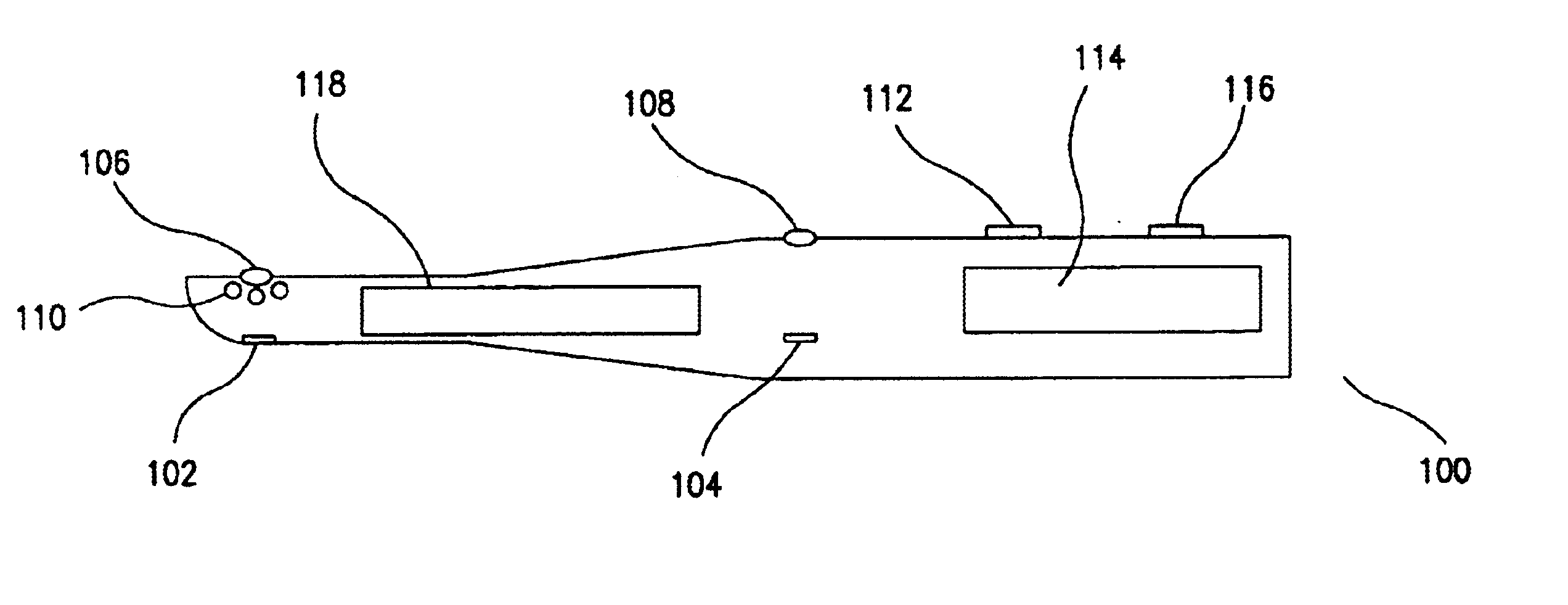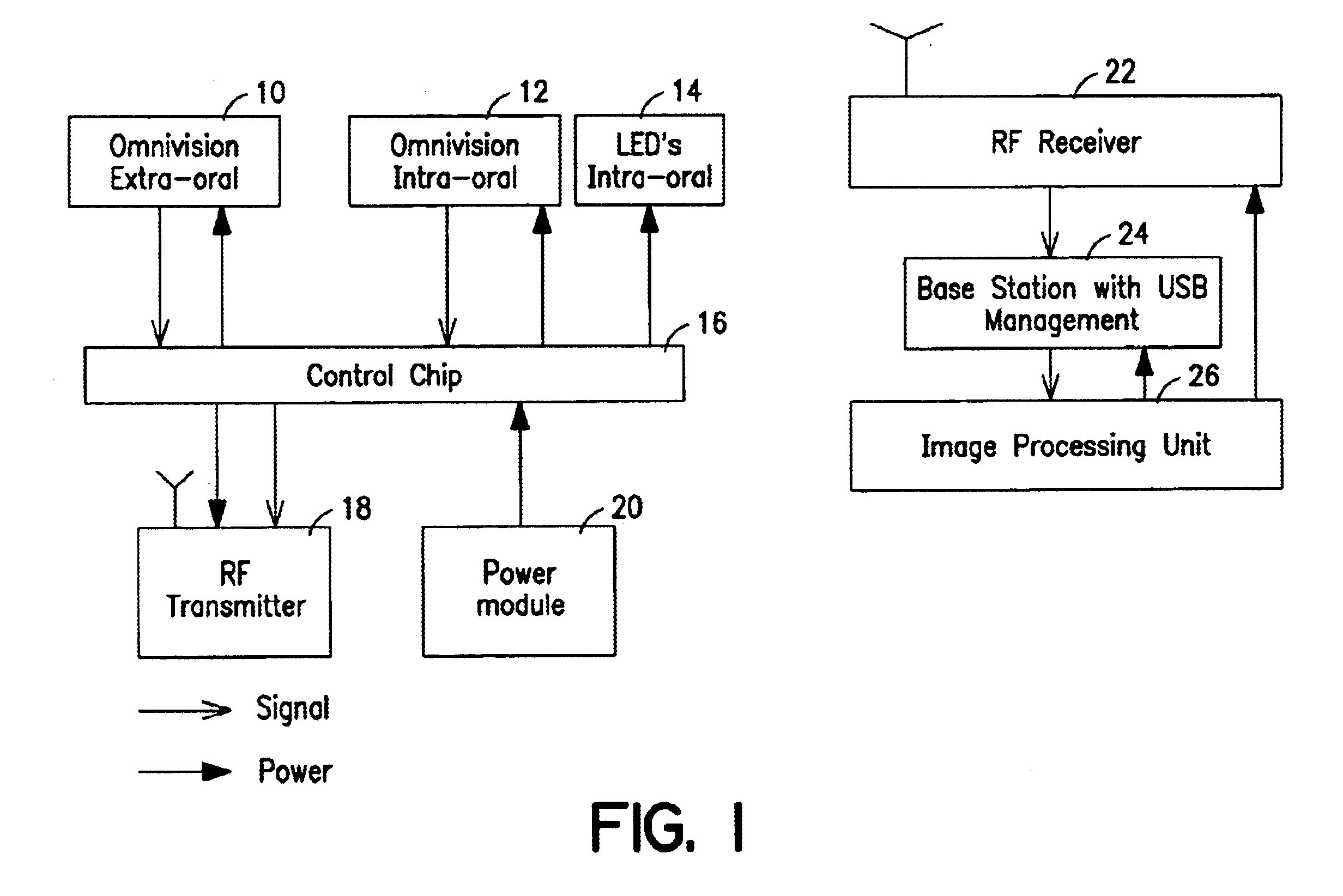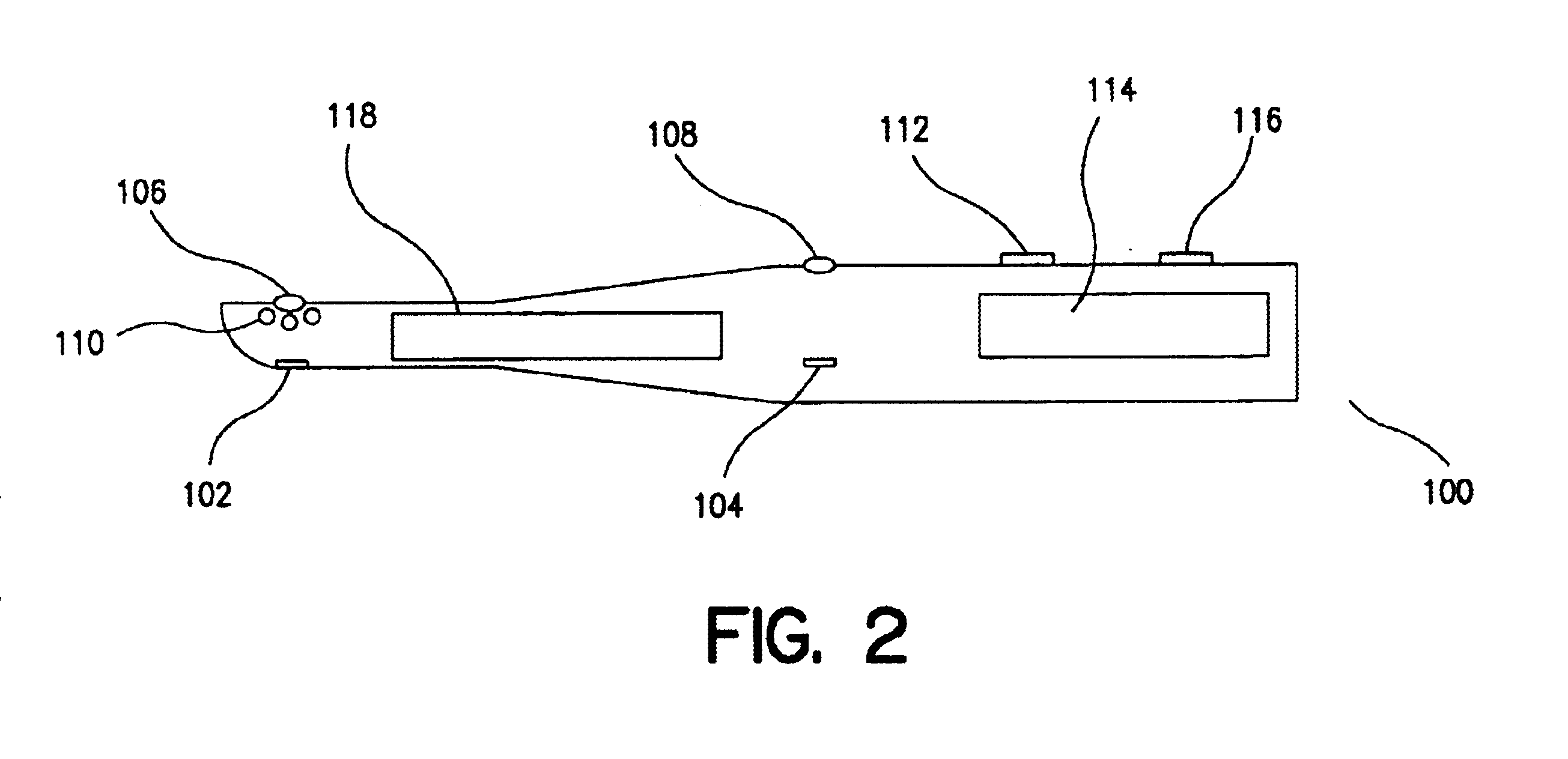Dental camera utilizing multiple lenses
a dental camera and lens technology, applied in the field of dental cameras, can solve the problems of difficult to visualize a dental structure using dental mirrors, significant limitations, and small mirror image, and achieve the effect of improving the visual effect of the patient, reducing the difficulty of patients undergoing surgery, and improving the patient's comfor
- Summary
- Abstract
- Description
- Claims
- Application Information
AI Technical Summary
Benefits of technology
Problems solved by technology
Method used
Image
Examples
Embodiment Construction
[0034]As explained above, the present invention relates to a dental camera having at least two lenses, selectable for switching between an intra-oral mode and an extra-oral mode. Each lens may be either a fixed focus or a variable-focus lens. A fixed-focus lens is a lens whereby the distance from the lens to the sensor is physically fixed. As a result, a fixed-focus lens creates a sharp image at only one distance to its subject. A variable-focus lens is a zoom lens, i.e., one in which focal length is variable. Elements inside a variable-focus lens shift their positions, enabling the lens to change its focal length, in effect providing one lens that has many focal lengths.
[0035]In order to implement the multiple lenses, in one embodiment of the present invention, the dental camera comprises two or more image sensors which generate image signals. The image sensors may be CMOS active pixel sensors (APS), such as for example an Omnivision OV7910N CMOS APS array. In accordance with the p...
PUM
 Login to View More
Login to View More Abstract
Description
Claims
Application Information
 Login to View More
Login to View More - R&D
- Intellectual Property
- Life Sciences
- Materials
- Tech Scout
- Unparalleled Data Quality
- Higher Quality Content
- 60% Fewer Hallucinations
Browse by: Latest US Patents, China's latest patents, Technical Efficacy Thesaurus, Application Domain, Technology Topic, Popular Technical Reports.
© 2025 PatSnap. All rights reserved.Legal|Privacy policy|Modern Slavery Act Transparency Statement|Sitemap|About US| Contact US: help@patsnap.com



